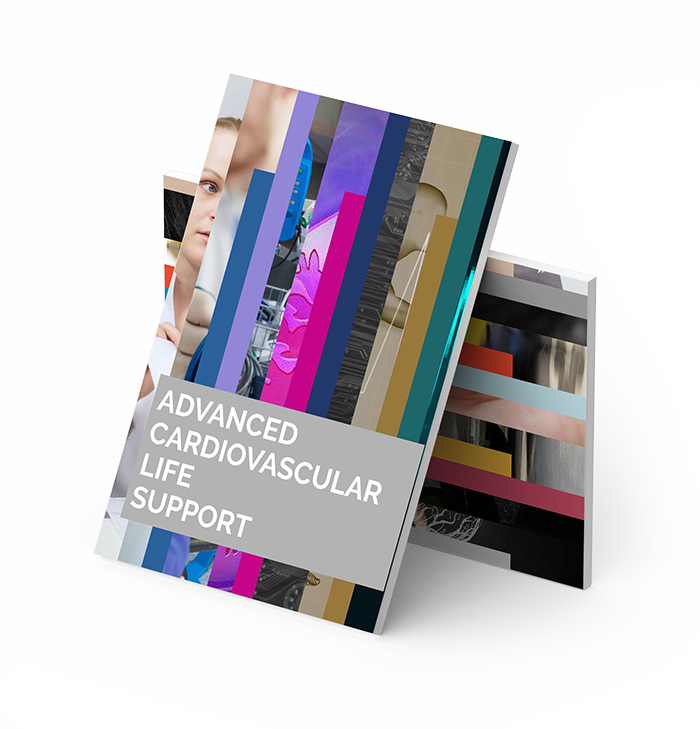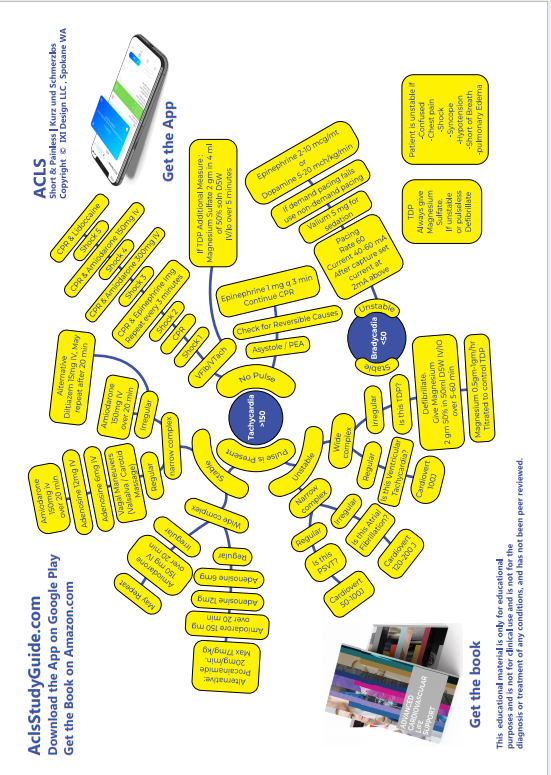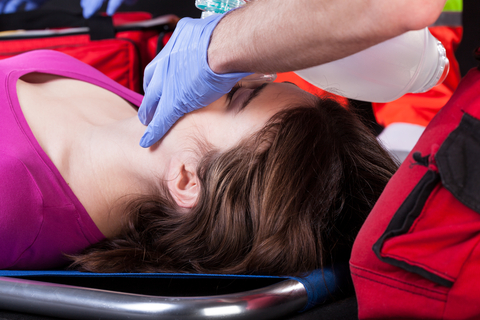
Pulseless Electrical Activity PEA
Remember, you already have an organized rhythm in PEA. What you dont have is a pulse. So , NO SHOCKS please! DO NOT SHOCK PEA. The rhythm could be anything, it could be idioventricular, junctional or sinus bradycardias)
(Just to be clear, VF and Pulseless VTach are different and don't come under the category of PEA)
What you do instead is:
5 Cycles of CPR.
There is other things that the rest of the team should be doing while you are doing CPR:
- Start an IV line.
- Draw and send off venous and arterial blood.
- Interrupt CPR for 10 seconds at some point to insert an Endotracheal tube. Remember, 10 seconds means 10 seconds and no more. Once an ET tube is in place, chest compressions can continue nonstop at 100 per minute without pausing for breaths. Breaths should be given every 6-8 seconds. Remember, once you put an ET tube in, confirm position by ausculation and capnography. If you don't know how to put an ET tube in, use a Combitube, insert blindly; use the blue cuff to ventillate while listening for air entry in both lungs. If you instead hear epigastric sounds, stop using the blue tube to ventillate, use the other lumen instead to ventillate. 100% Oxygen should be administered.
- IV fluids running full.
- Connect a NIBP and pulse oximeter.
- Check for and correct any potential causative factors, namely hypovolemia, hypoxia, hypothermia, hypoglycemia, hyperkalemia, hydrogen ion imbalance (acidosis), toxins, cardiac tamponade, tension pneumothorax, thrombosis coronary or pulmonary. The most common reason is hypovolemia.
Medications to Use:
While CPR is going on, give Epinephrine 1 milligram IV.
Repeat Epinephrine every 3 minutes.
After every 5 cycles of CPR, check the pulse. If he is still no pulse, continue CPR.
Exam findings can give us a clue to the etiology of PEA.
- The most common reason is hypovolemia; absence of jugular venous pulsations is a clue. Give IV normal saline bolus fluids 500ml. Repeat if needed.
- If there is Jugular venous distension, consider cardiac tamponade, pulmonary embolism and pneumothorax.
- If there is tracheal deviation consider Pneumothorax.
- If air entry is diminished on one side of the chest consider Pneumothorax.
- If there is a history of suicide attempts, consider drug toxicity.
- Treat beta-blocker or calcium channel overdose with Glucagon 1mg iv and Calcium Chloride 10% 10mg/kg IV.
- Treat narcotic overdose with Naloxone 2mg iv. Use Naloxone 0.4mg in 10 ml NS IV push.
- Treat hyperkalemia also with Sodium Bicarbonate 1 mEq /kg IV bolus.
- Treat tricyclic overdose with Sodium Bicarbonate 1mEq/kg IV bolus.
Etiology of PEA:
The Hs and the Ts
- Hypovolemia
- Hypoxia
- Hypotension
- Hypokalemia
- Hydrogen Ion (Acidosis)
- Hypothermia
- Tablets (toxicity)
- Tamponade
- Tension Pneumothorax
- Thrombus : Myocardial Infarction
- Thrombus : Pulmonary Embolism
Read Other Topics
Read All Pages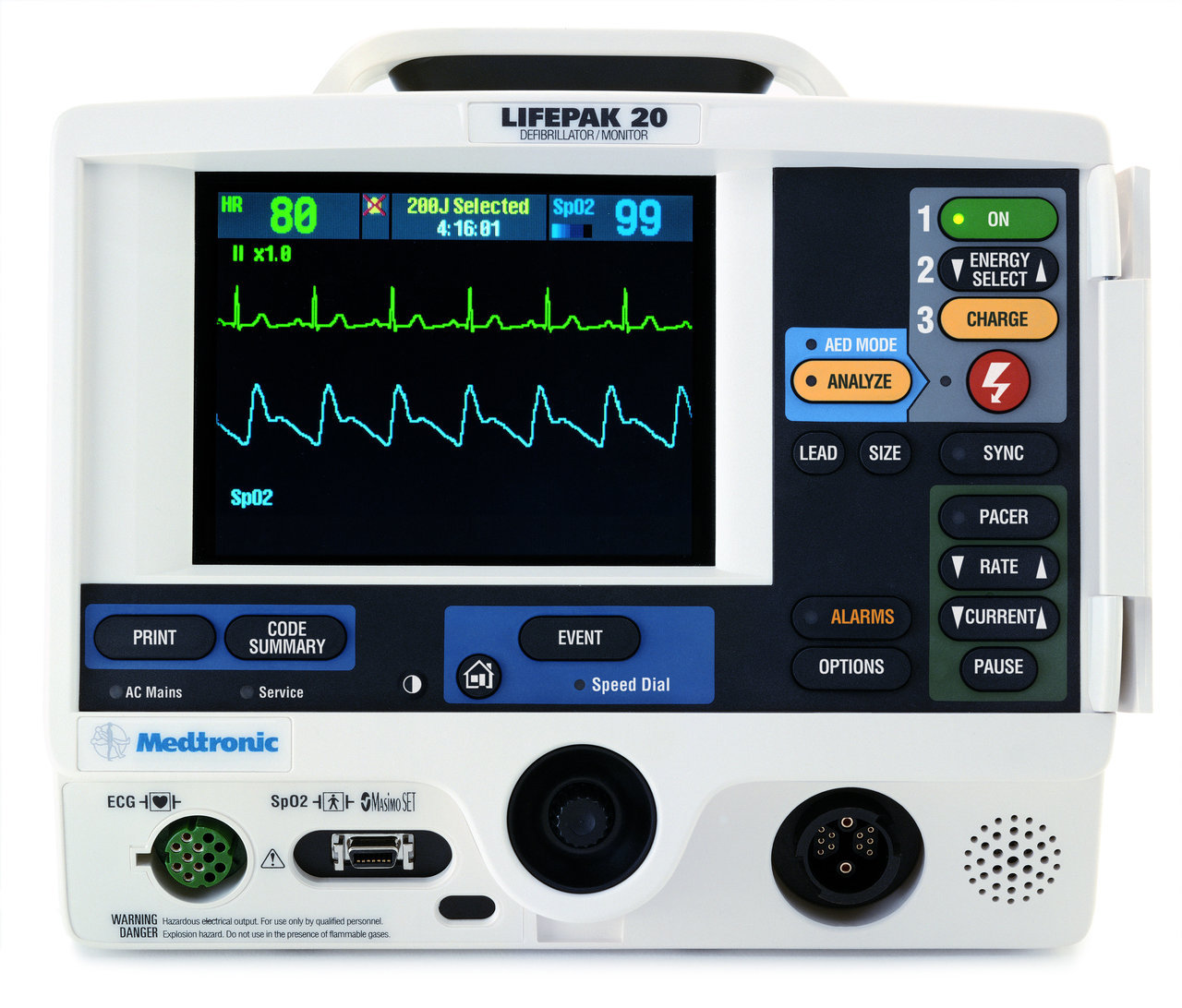
Ventricular Fibrillation
It this was an unwitnessed arrest, meaning it did not happen in front of you, you should give him 5 cycles of CPR...
Read More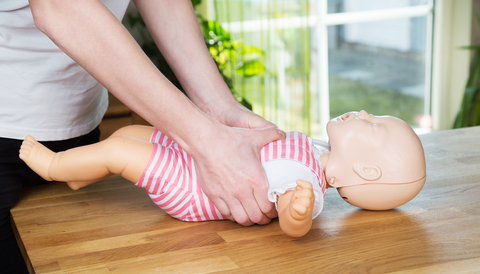
Infant Cpr
Perform 30 chest compressions. Use two fingers and deliver the compressions over the breastbone, just below the nipple line...
Read More
